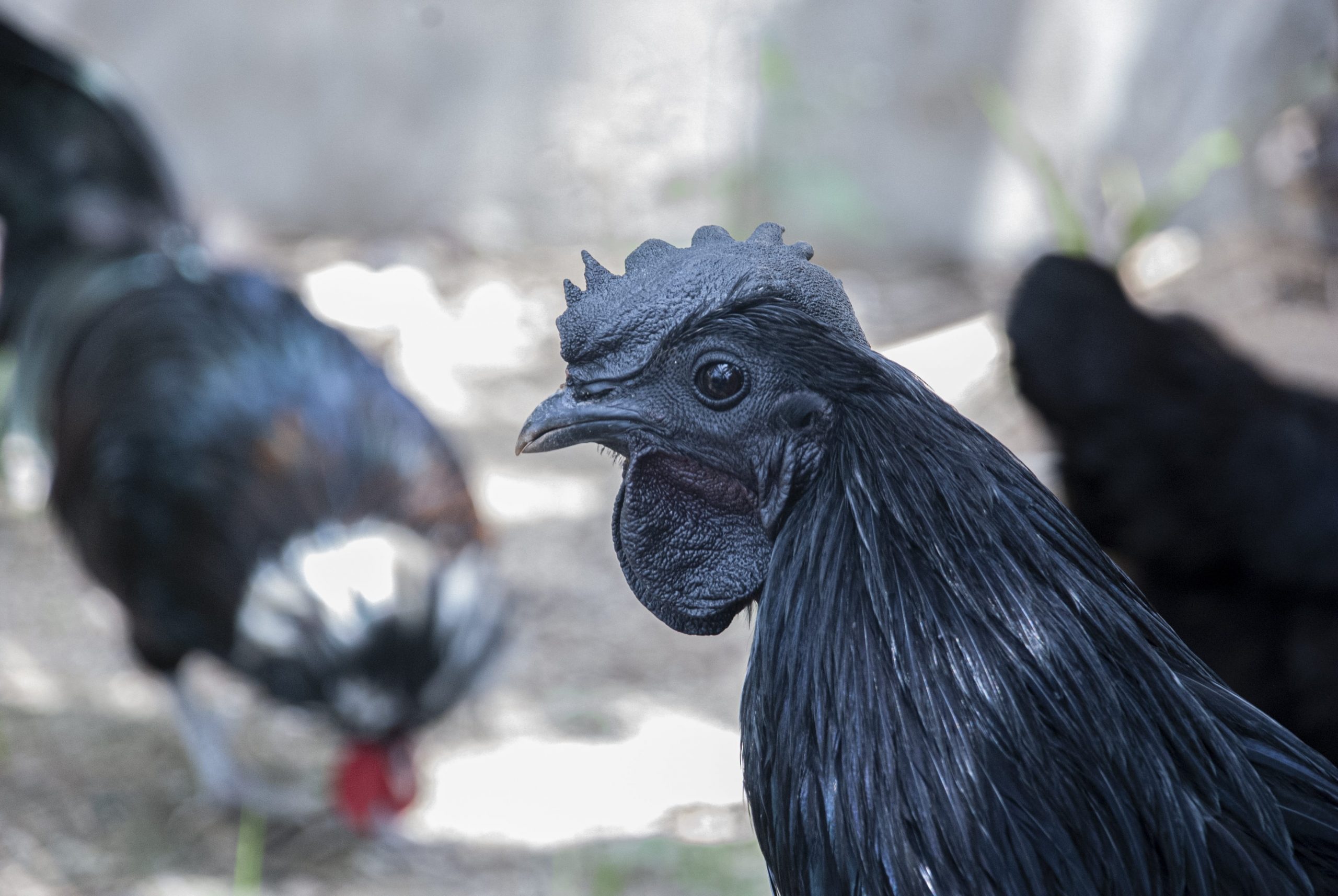
Introduction
Imagine a spice so potent that just a pinch can transform an entire dish – that’s Hing (Asafoetida) for you. A staple in Indian kitchens, Hing is revered for its unparalleled ability to add a depth of flavor, especially to vegetarian dishes. But when it comes to pregnancy, the question of its safety turns this culinary marvel into a subject of intense debate.
Hing, obtained from the resin of the Ferula plant, is more than just a flavor enhancer. It’s a bridge between food and medicine, with a history steeped in traditional uses for various ailments. Its pungent aroma and distinct taste are not just markers of its culinary identity, but also of its medicinal potency.
As you embark on the journey of pregnancy, a period marked by joy and careful consideration, every choice you make becomes crucial – especially when it comes to your diet. Pregnancy is not just about eating for two; it’s about nurturing both you and your baby with the right nutrients, while also being mindful of the potentially harmful effects of certain foods and spices.
This brings us to the crux of our exploration: Is Hing safe during pregnancy? This question isn’t just about understanding a spice; it’s about unraveling the complexities of maternal nutrition and safety. In this comprehensive guide, we delve deep into the world of Hing, examining its role and impact during each trimester of pregnancy. We will navigate through the benefits and risks, sift through the myths and facts, and provide you with a trimester-by-trimester breakdown of Hing’s safety, helping you make informed decisions for the well-being of you and your baby.
So, let’s begin this flavorful journey of discovery, where we’ll not only uncover the truth about Hing during pregnancy but also equip you with knowledge that empowers and guides you through one of the most beautiful and challenging phases of life.
Section 1: What is Hing (Asafoetida)?
Hing, also known as Asafoetida, is a condiment with a story as rich as its flavor. Originating from the sap of the Ferula plants found primarily in Iran and Afghanistan, Hing has traversed borders and cultures, making its mark in the culinary world, particularly in Indian cuisine. But what is it about this spice that makes it so unique?
At first glance, Hing doesn’t seem particularly remarkable. It’s a dried, resinous gum, often sold in powdered form, with a pungent odor that can be overwhelming. However, when added to hot oil or clarified butter, it undergoes a culinary metamorphosis. The once harsh aroma mellows into a savory, garlic-like fragrance, and the flavor it imparts is equally transformative, adding a depth and complexity to dishes that is unmatched.
Beyond its culinary use, Hing holds a venerable position in the world of traditional medicine. It’s a cornerstone in Ayurvedic practices, revered for its digestive properties. It’s believed to balance the ‘Vata’ and ‘Pitta’ doshas – the elements that, according to Ayurveda, govern our physical and emotional well-being. Hing’s anti-inflammatory, antiviral, and antibacterial properties make it a go-to remedy for a variety of ailments, from stomach aches to respiratory issues.
Nutritionally, Hing is a powerhouse of compounds beneficial for health. It contains a rich blend of essential oils, resins, and gum, with the primary active compounds being ferulic acid and various sulfur compounds. These components contribute not just to its unique flavor but also to its health benefits, such as reducing bloating, preventing constipation, and even offering relief from menstrual pain.
But the true enigma of Hing lies in its dual nature. It’s both a humble kitchen staple and a potent medicinal herb. This duality raises important questions, especially when it comes to specific life stages like pregnancy. Can something so powerful and potent be safe for expectant mothers and their developing babies?
As we venture further into the role of Hing during pregnancy, it’s crucial to remember this spice’s multifaceted nature. It’s not just a flavor enhancer or a medicinal remedy; it’s a fusion of both, each aspect contributing to the intrigue and concern surrounding its use during pregnancy.
In the next sections, we’ll delve into the trimester-specific impacts of Hing, unraveling its benefits and risks, and guiding expecting mothers through the labyrinth of dietary choices during pregnancy. Stay tuned as we explore the safety and wisdom of incorporating Hing into a pregnancy diet.
Section 2: Hing’s Impact on Pregnancy – A Trimester-by-Trimester Breakdown
Pregnancy is a time of significant changes, not just physically and emotionally, but also in terms of dietary needs and restrictions. As expectant mothers navigate these changes, understanding the impact of various foods and spices on their health and that of their developing baby becomes paramount. This section offers a detailed look at how Hing (Asafoetida) fits into this complex puzzle, examining its role and impact during each trimester of pregnancy.
First Trimester: A Critical Phase
The first trimester is a crucial period in pregnancy. It’s a time of rapid development for the fetus, as the foundations for all major organs are laid. During this phase, the embryo is most vulnerable, making the mother’s diet exceedingly important.
- Potential Risks: In traditional medicine, Hing is known to stimulate the uterus, raising concerns about its consumption during early pregnancy. The risk, although low in culinary doses, is still significant enough to warrant caution. The potential for Hing to induce uterine contractions could pose a threat of miscarriage, especially in larger amounts. Additionally, the strong aroma of Hing might exacerbate morning sickness for some women, as many experience heightened sensitivity to smells during this period.
- Precautions: Given these risks, it is generally advised to avoid or limit Hing in the first trimester. If Hing is a regular part of your diet, consult your healthcare provider for personalized advice. Opting for milder spices and herbs during this sensitive phase might be a safer alternative.
Second Trimester: Adjusting the Diet
As you move into the second trimester, the risk of miscarriage decreases, and dietary restrictions often become less stringent. This is a time of steady growth for the fetus and increased nutritional needs for the mother.
- Moderation is Key: If Hing is reintroduced, it should be in minimal amounts. A pinch of Hing in cooking might aid digestion – a common issue during pregnancy – without posing significant risks. Its carminative properties can be beneficial in relieving gas and bloating, frequent discomforts during pregnancy.
- Watch for Reactions: Even in small quantities, pay attention to how your body reacts to Hing. Any signs of discomfort, allergic reactions, or digestive issues should be taken seriously. Consult with your healthcare provider if you experience any adverse effects.
Third Trimester: Preparing for the Homestretch
The third trimester sees the fetus gaining weight and the mother preparing for childbirth. Dietary choices continue to play a crucial role.
- Continued Caution: While the risks associated with Hing consumption are lower, it’s still advisable to use it sparingly. Its potent nature might cause digestive issues, which can be uncomfortable as the baby grows and space in the abdomen becomes limited.
- Balancing Benefits and Risks: The benefits of Hing, such as aiding digestion and possibly reducing bloating, need to be weighed against its potential risks. Always err on the side of caution and follow medical advice tailored to your specific health conditions.
In each trimester, the approach to consuming Hing should be guided by an understanding of its properties, the developmental needs of the fetus, and the mother’s health. The key is moderation and personalized dietary planning, based on medical advice and individual health considerations. As we move forward, we’ll explore the benefits and risks in more detail, offering a balanced perspective to help expecting mothers make informed dietary choices.
Section 3: Benefits of Hing During Pregnancy
The conversation around Hing (Asafoetida) in pregnancy is not just about caution and risk management; it’s equally important to acknowledge the potential benefits this unique spice can offer during this critical time. While the primary focus for expectant mothers is understandably on avoiding harm, understanding how Hing might positively contribute to their health and well-being is a crucial aspect of making informed dietary choices. This section delves into the potential health benefits of incorporating Hing into a pregnancy diet, supported by scientific insights and traditional wisdom.
Digestive Health: A Key Benefit
One of the most celebrated properties of Hing is its ability to aid digestion, an aspect particularly relevant during pregnancy. Many women experience digestive issues such as bloating, gas, and indigestion due to hormonal changes and the physical pressure of a growing uterus.
- Natural Carminative: Hing’s carminative properties make it effective in relieving gastrointestinal discomfort. By reducing bloating and aiding the expulsion of gas, it can provide much-needed relief from common digestive woes faced during pregnancy.
- Anti-inflammatory Effects: The anti-inflammatory compounds in Hing can help soothe the digestive tract, reducing inflammation and irritation that may contribute to discomfort.
Respiratory Benefits: Aiding Breathing
Pregnancy can sometimes exacerbate respiratory issues due to increased abdominal pressure and hormonal fluctuations. Here, the traditional use of Hing as a remedy for respiratory conditions can be particularly beneficial.
- Expectorant Properties: Hing has expectorant properties, which means it can help in clearing mucus from the airways, making breathing easier for expectant mothers who may be struggling with congestion or a mild cough.
- Immune Support: The antimicrobial properties of Hing can also play a role in supporting the immune system, an important factor as the body adapts to the demands of pregnancy.
Nutritional Profile: A Hidden Gem
While not typically highlighted for its nutritional content, Hing does contain several compounds that can contribute positively to maternal health.
- Rich in Minerals: Hing contains trace amounts of minerals like iron, calcium, and phosphorus – nutrients that are crucial during pregnancy for both the mother’s health and fetal development.
- Antioxidants: The antioxidant properties of Hing help combat oxidative stress, which is essential for maintaining overall health and well-being during pregnancy.
Emotional Well-being: Beyond Physical Health
Pregnancy is as much an emotional journey as a physical one. The mood-lifting properties of Hing, though less discussed, can play a subtle but significant role in managing mood swings and stress.
- Nerve Stimulant: Traditionally, Hing has been used as a nerve stimulant. Its potential to uplift mood and reduce feelings of depression can be valuable during pregnancy, a time often fraught with emotional ups and downs.
Integrating Hing into a Pregnancy Diet
Understanding these benefits is just the first step. The next is to integrate Hing into the diet in a way that maximizes these benefits while minimizing any potential risks.
- Culinary Use: The safest way to consume Hing during pregnancy is as a culinary spice. Its potent nature means that a small amount is sufficient to impart both flavor and health benefits.
- Consultation with Health Experts: As with any dietary change during pregnancy, consulting with a healthcare provider or a dietitian can provide guidance on how to incorporate Hing safely into your diet, tailored to your individual health needs and pregnancy stage.
In the next section, we will counterbalance this discussion by examining the potential risks and precautions associated with Hing consumption during pregnancy, ensuring a well-rounded understanding of how to approach this powerful spice in the context of maternal nutrition.
Section 4: Risks and Precautions of Hing in Pregnancy
While Hing (Asafoetida) offers various health benefits, it’s equally crucial to address the potential risks and necessary precautions when considering its consumption during pregnancy. This section is dedicated to exploring the concerns associated with Hing, providing expectant mothers with comprehensive information to navigate these risks effectively.
Understanding the Risks
The primary concern with Hing consumption during pregnancy revolves around its potent nature and the impact it can have on the uterus.
- Uterine Stimulation: Hing has traditionally been used to stimulate the menstrual cycle and treat amenorrhea (absence of menstruation). This property raises concerns about its potential to stimulate uterine contractions during pregnancy, especially in the first trimester, potentially increasing the risk of miscarriage.
- Allergic Reactions: For some individuals, Hing can cause allergic reactions. Pregnant women, especially those with a history of food allergies or sensitivities, should be cautious. Symptoms can include skin rashes, nausea, or diarrhea.
- Digestive Issues: Despite its digestive benefits, in some cases, excessive consumption of Hing can lead to gastrointestinal problems like heartburn, gas, and bloating – discomforts that are particularly unwelcome during pregnancy.
Precautionary Measures
Given these risks, it’s important to approach Hing consumption during pregnancy with caution. Here are some guidelines to help mitigate potential adverse effects:
- Limit Consumption: The general recommendation is to use Hing in minimal quantities. A pinch in cooking is usually sufficient to gain its benefits without overexposure.
- Avoid Raw Hing: Hing should never be consumed in its raw form during pregnancy. Its raw, concentrated form is much more potent and can pose a higher risk of stimulating the uterus or causing digestive issues.
- Monitor Body’s Response: Pay close attention to how your body reacts after consuming dishes with Hing. Any unusual symptoms or discomfort should be taken seriously and discussed with your healthcare provider.
- Consult Healthcare Professionals: Before making Hing a part of your pregnancy diet, consult with your healthcare provider or a registered dietitian. They can offer advice tailored to your specific health needs and pregnancy stage.
Navigating Dietary Choices
Navigating dietary choices during pregnancy can be challenging, especially when it comes to spices and herbs with potent medicinal properties like Hing.
- Informed Decision Making: Understanding both the benefits and risks of Hing can empower you to make informed decisions about its inclusion in your diet.
- Cultural and Personal Preferences: Dietary choices are often influenced by cultural habits and personal preferences. If Hing is a significant part of your cuisine, finding a balance and safe way to include it in your meals can be important for both your enjoyment and health.
- Alternative Options: For those who prefer to err on the side of caution, or in cases where Hing is advised against, exploring alternative spices that offer similar flavors or health benefits can be a useful strategy.
In conclusion, while Hing does offer certain health benefits during pregnancy, its potential risks cannot be overlooked. The approach to consuming Hing should be one of moderation and cautious consideration, always prioritizing the safety and well-being of both mother and baby. With the right guidance and mindful eating habits, it is possible to navigate these dietary choices effectively.
In the next section, we will delve into the specific considerations and recommendations for pre- and post-natal nutrition, broadening our understanding of how Hing fits into the larger picture of maternal health.
Section 5: Pre- and Post-Natal Considerations
The journey of pregnancy doesn’t just revolve around the nine months of gestation; it extends to the pre-natal phase that precedes conception and the post-natal period following childbirth. These phases are critical for both maternal and infant health, and dietary choices, including the use of spices like Hing (Asafoetida), play a significant role. This section explores how Hing fits into the broader spectrum of pre- and post-natal nutrition, providing a comprehensive understanding for expectant and new mothers.
Pre-Natal Health: Preparing for Pregnancy
- Nutritional Foundation: Before conception, building a strong nutritional foundation is crucial. Hing, with its digestive benefits, can be part of a balanced diet, aiding in overall gut health and nutrient absorption.
- Fertility Considerations: Given Hing’s traditional use in regulating menstrual cycles, its moderate consumption might positively influence fertility. However, due to its potent nature, consulting with a healthcare provider is advisable to understand its role in pre-conception health.
Hing During Pregnancy: Trimester-Specific Guidelines
- First Trimester Cautions: As discussed earlier, Hing’s potential uterine-stimulating effects make it advisable to limit or avoid its use during the first trimester.
- Second and Third Trimesters: In these stages, the judicious use of Hing can aid in digestion and relieve gastrointestinal discomforts, common during later stages of pregnancy.
Post-Natal Considerations: Breastfeeding and Recovery
- Breastfeeding: The post-natal period, especially if breastfeeding, requires careful dietary choices. While Hing can aid in postpartum recovery by improving digestion, caution is advised as it can pass through breast milk, potentially affecting the baby.
- Infant Sensitivity: Infants might be sensitive to strong flavors or compounds in breast milk. Monitoring the baby’s reaction when consuming Hing is crucial. Any signs of discomfort or allergic reactions in the infant should lead to immediate dietary adjustments.
- Maternal Recovery: Post-delivery, the body needs time to recover. Hing’s anti-inflammatory properties can be beneficial in this healing process. However, moderation remains key, and any use should be aligned with medical advice.
Balancing Diet and Health
- Holistic Nutritional Approach: The integration of Hing into a pre- and post-natal diet should be part of a holistic approach to nutrition. It’s not just about individual ingredients but how the overall diet supports health and recovery.
- Consultation and Personalization: Each woman’s health, body, and pregnancy journey are unique. Consulting healthcare providers for personalized dietary plans, including the use of spices like Hing, is essential for optimal health outcomes.
- Cultural Practices and Modern Medicine: In many cultures, specific dietary practices and restrictions are followed pre- and post-pregnancy. Balancing these traditional practices with modern medical advice is key in making informed nutritional choices.
In summary, the role of Hing in pre- and post-natal health is multifaceted and should be navigated with care. Understanding its benefits and risks, and how they apply to different stages of the maternal journey, is crucial. The next section will provide guidelines on safe consumption amounts of Hing during pregnancy, offering practical advice for expectant mothers.
Section 6: Safe Consumption Guidelines for Hing During Pregnancy
Navigating the use of Hing (Asafoetida) during pregnancy involves understanding not only its benefits and risks but also the appropriate amounts that can be safely incorporated into the diet. This section offers a detailed guide on how to consume Hing during pregnancy, providing practical and safe usage tips for expectant mothers.
Understanding Safe Quantities
The key to safely consuming Hing during pregnancy lies in its quantity. The potent nature of Hing demands a cautious approach, especially when the health of both the mother and the developing fetus is at stake.
- Culinary Uses: In culinary contexts, Hing is typically used in very small quantities. A pinch of Hing (around 1/8 teaspoon or less) is usually enough to flavor a dish for several people. This minimal use is generally considered safe during pregnancy, especially in the second and third trimesters.
- Avoiding Excess: Large quantities or medicinal doses of Hing are not recommended during pregnancy. Excessive consumption could potentially lead to complications, including uterine contractions or digestive issues.
Guidelines for Each Trimester
- First Trimester: Given the heightened risk of miscarriage and the developing embryo’s vulnerability, it is advisable to avoid Hing during the first trimester.
- Second Trimester: As the pregnancy progresses and the risk of miscarriage decreases, introducing a small amount of Hing in cooking may be considered. However, it should be done cautiously, and any adverse reactions should be monitored.
- Third Trimester: In the third trimester, continued cautious use of Hing is advisable. Its digestive benefits can be helpful, but always in minimal amounts and under the guidance of a healthcare professional.
Special Considerations
- Allergy and Sensitivity: If you have a history of food allergies or sensitivities, particularly to spices, it’s best to avoid Hing or consult a healthcare provider before using it.
- Cultural and Personal Preferences: Dietary practices vary greatly across cultures and individuals. If Hing is a significant part of your diet, finding a balance between cultural dietary habits and medical advice is important.
- Quality of Hing: Ensure that the Hing used is of good quality and purity. Adulterated or impure Hing may contain additives that are not suitable for pregnant women.
Consulting Healthcare Professionals
- Medical Advice: The most important guideline is to consult with your healthcare provider before making any changes to your diet during pregnancy, including the use of Hing. They can offer personalized advice based on your health history and specific circumstances.
- Registered Dietitian Consultation: A registered dietitian can provide tailored guidance on incorporating Hing into your diet safely, considering your nutritional needs and any existing health conditions.
In summary, while Hing can be a beneficial addition to a pregnancy diet, its use must be approached with care and moderation. Understanding the safe quantities and adhering to trimester-specific guidelines can help ensure the health and safety of both the mother and the developing baby. With informed choices and professional guidance, expectant mothers can navigate the use of Hing effectively during their pregnancy journey.
Section 7: Alternative Spices for Pregnant Women
For expectant mothers who may need or choose to avoid Hing (Asafoetida) during pregnancy, exploring alternative spices that offer similar flavors or health benefits is a practical and beneficial approach. This section provides a detailed guide on safe and healthy spice alternatives, ensuring that pregnant women can enjoy flavorful meals without compromising on safety and nutrition.
Understanding the Need for Alternatives
- Sensitivities and Restrictions: Pregnancy can bring about heightened sensitivities and dietary restrictions. Finding alternatives to Hing helps accommodate these changes while still enriching the diet with diverse flavors.
- Nutritional Considerations: Spices not only add flavor to food but also contribute to the nutritional profile of a meal. Choosing alternatives that offer health benefits is crucial during pregnancy.
Safe and Flavorful Spice Options
- Turmeric: Known for its anti-inflammatory properties and rich in antioxidants, turmeric is a safe and beneficial spice during pregnancy. It adds color and a mild, earthy flavor to dishes.
- Ginger: Ginger is renowned for its ability to alleviate nausea and morning sickness, common in pregnancy. Its warm, slightly spicy flavor makes it a great addition to a variety of dishes.
- Cumin: Cumin is another excellent alternative, known for its digestive properties. It adds a nutty, warm flavor to meals and can aid in digestion and iron absorption.
- Coriander: Coriander, both in seed and leaf (cilantro) forms, is a gentle spice, known for its cooling properties. It adds a fresh, citrusy flavor to dishes.
- Fennel Seeds: With a sweet, licorice-like flavor, fennel seeds are another good alternative. They are known to aid digestion and can be particularly soothing for the stomach.
Incorporating Alternatives into Your Diet
- Experiment with Flavors: Pregnancy is an excellent time to experiment with different herbs and spices. Trying various combinations can not only enhance the flavor of your meals but also provide diverse nutrients.
- Understanding Quantities: Just like with Hing, moderation is key when using any spice during pregnancy. Use them judiciously to avoid any adverse reactions.
- Recipe Adjustments: Many traditional recipes that call for Hing can be easily adapted with alternative spices. Experiment with the alternatives suggested to find the best match for each dish.
Consulting with Healthcare Professionals
- Personalized Advice: While these alternatives are generally considered safe, every pregnancy is unique. Consult with your healthcare provider or a dietitian for advice tailored to your specific dietary needs and health conditions.
- Cultural and Dietary Preferences: Consider your cultural dietary habits and personal preferences when choosing alternatives. Spices play a significant role in cultural cuisines, and finding suitable substitutes can help maintain the joy and comfort of familiar foods.
In conclusion, while Hing has its unique place in culinary traditions, there are several safe and flavorful alternatives that can be used during pregnancy. These alternatives not only add variety to the diet but also contribute to the overall health and well-being of the mother and developing baby. By making informed choices and seeking professional advice, pregnant women can enjoy a rich, diverse, and nutritious diet.
Section 8: Conclusion and Recommendations
As we conclude our comprehensive exploration of Hing (Asafoetida) and its use during pregnancy, it’s important to consolidate our understanding and offer final recommendations. This journey through the complexities of Hing’s benefits, risks, safe consumption guidelines, and alternatives provides a nuanced perspective essential for expectant mothers. Let’s summarize the key points and provide practical advice for incorporating (or avoiding) Hing in a pregnancy diet.
Summarizing the Key Points
- Dual Nature of Hing: Hing is a potent spice with both culinary and medicinal properties. Its benefits include aiding digestion and potentially improving respiratory health, but it also poses risks such as stimulating uterine contractions and causing allergic reactions.
- Trimester-Specific Guidelines: In the first trimester, due to heightened risks, it’s advisable to avoid Hing. In the second and third trimesters, Hing can be reintroduced in minimal amounts, provided it’s done cautiously and under medical guidance.
- Pre- and Post-Natal Considerations: The use of Hing extends beyond pregnancy, impacting both pre-natal health and post-natal recovery and breastfeeding. Each phase requires a tailored approach to dietary choices.
Practical Recommendations
- Consult Healthcare Providers: The most crucial recommendation is to consult with healthcare professionals before making any dietary changes, including the use of Hing. They can offer personalized advice based on individual health needs and pregnancy progression.
- Moderation is Key: If Hing is used, it should always be in small amounts. Excessive consumption can lead to complications, making moderation a guiding principle.
- Quality Matters: Ensure that the Hing used is pure and of high quality. Adulterated or impure forms may contain additives not suitable for pregnant women.
- Mindful Eating Habits: Pregnant women should focus on a balanced diet that supports both their health and the development of the fetus. Incorporating a variety of spices and herbs can enhance nutritional intake and culinary enjoyment.
- Embrace Alternatives: For those who choose to avoid Hing or need to do so for health reasons, exploring alternative spices like turmeric, ginger, cumin, and coriander can provide similar benefits without the associated risks.
Final Thoughts
Pregnancy is a journey marked by careful consideration and informed choices, especially regarding diet. While Hing offers unique flavors and potential health benefits, its use during pregnancy must be approached with caution and mindfulness. By balancing traditional wisdom with contemporary medical advice, expectant mothers can navigate their dietary choices effectively, ensuring the health and well-being of both themselves and their developing baby.
In essence, the story of Hing during pregnancy is one of balance and informed choice. It’s about understanding the nuances of this potent spice and making decisions that best support maternal and fetal health. With the right guidance and a mindful approach, Hing can be a part of this beautiful journey, adding not just flavor but also nourishment in the most nurturing way.
FAQs for “Is It Safe to Consume Hing (Asafoetida) During Pregnancy?”
- Can I use Hing in my cooking during the first trimester of pregnancy?
- It’s generally recommended to avoid Hing in the first trimester due to its potent nature and potential risk of stimulating uterine contractions.
- Is Hing safe during the second and third trimesters?
- In the second and third trimesters, Hing can be reintroduced in minimal quantities. However, it should be used cautiously and under medical guidance.
- What are the benefits of consuming Hing during pregnancy?
- Hing can aid in digestion, alleviate gastrointestinal discomfort, and potentially improve respiratory health when consumed in small amounts.
- Are there any risks associated with consuming Hing while pregnant?
- Yes, risks include potential uterine contractions, allergic reactions, and gastrointestinal issues, particularly when consumed in large amounts.
- How much Hing is safe to consume during pregnancy?
- A pinch of Hing (around 1/8 teaspoon) in cooking is generally considered safe, especially in the later stages of pregnancy.
- Can consuming Hing affect my baby during pregnancy?
- While small amounts are generally safe, excessive consumption of Hing could potentially pose risks. It’s best to consult with a healthcare provider for personalized advice.
- What are some safe alternatives to Hing for pregnant women?
- Alternatives include turmeric, ginger, cumin, and coriander, which offer similar flavors and health benefits without the associated risks of Hing.
- Should I include Hing in my diet after childbirth, especially if I’m breastfeeding?
- While Hing can aid in postpartum recovery by improving digestion, it should be used cautiously during breastfeeding, as it can pass through breast milk and may affect the baby.
- How can I ensure the Hing I use is safe and pure?
- Purchase Hing from reputable sources, and ensure it’s pure and unadulterated. Avoid brands that mix Hing with other ingredients that may not be safe during pregnancy.
- Can Hing help with morning sickness or nausea during pregnancy?
- Hing’s strong aroma may exacerbate nausea for some women, especially in the first trimester. Ginger is a safer alternative for alleviating morning sickness.
Blog Tags for the Post
pregnancy nutrition, Hing during pregnancy, maternal health, dietary guidelines for pregnant women, Asafoetida in pregnancy, trimester-specific diet, natural remedies for pregnancy, safe spices for pregnancy, pregnancy dietary advice, culinary tips for expectant mothers















